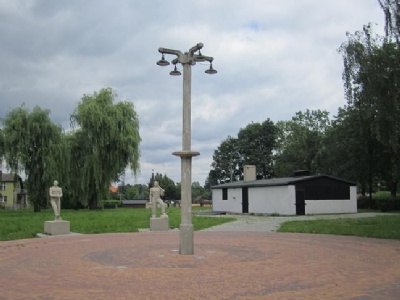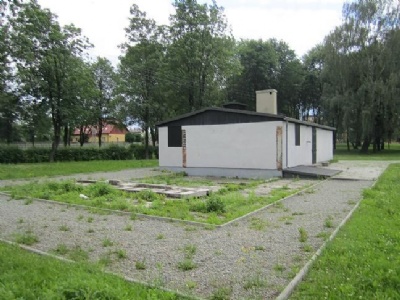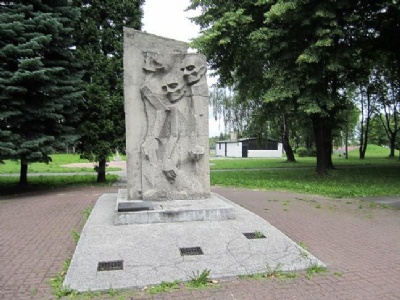Jawischowitz
In 1942, a satellite camp to Auschwitz was set up in a small village called Jawiszowice (german Jawischowitz), about ten kilometres south of Auschwitz. Prisoners of the camp were forced to work in a coal mine owned by Hermann Goering Werke. The average number of prisoners in the camp was about 2000, the majority of whom were Jews from different parts of occupied Europe. Given that a few of those who worked in the mine had any experience of mining, the mortality rate was high as a result of work accidents. Add to it ”ordinary” hardships such as lack of food, medicine, clothing, the high mortality becomes clear. Prisoners not longer able to work were sent back to Auschwitz where they were killed. It is estimated that between October 1942, and December 1944, about 1800 prisoners died. In January 1945, when Auschwitz began to be evacuated infront of the approaching Red army, about 1900 prisoners from Jawischowitz were evacuated west. After a few days, those who survived the Death march arrived at Wodzislaw slaski, fifty kilometres away. The evacuation happened so quickly that those who were too sick and exhausted and could not be evacuated were left in the camp.
Current status: Partly preserved/demolished with monument (2015).
Address: ul. Obozowa 2, 32-620 Brzeszcze.
Get there: Car.
Follow up in books: Kogon, Eugen: The Theory and Practice of Hell: The German Concentration Camps and the System Behind Them (2006).



Most of the camp is gone, but a barrack that is partially preserved/razed has been restored. The area is well maintained and dignified. The fact that the Germans used unskilled labour in mines and other industries was not unique for Jawischowitz. The shortage of labour was so great in the last years of the war that the shortage of skilled labour was compensated by unskilled labour. The consequence was that the fatal accidents at work were relatively common and that the material produced many times was substandard.